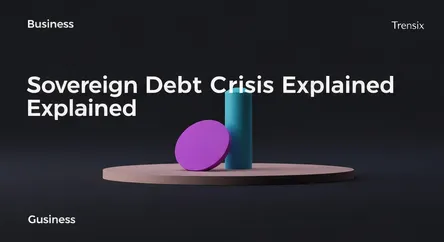Business
Sovereign Debt Crisis Explained

Discover what a sovereign debt crisis is, why it occurs, and how it impacts global economies and the financial stability of everyday people.
What is it?
A sovereign debt crisis occurs when a country's government is unable to repay its public debt. This happens when the government defaults on its bonds or can no longer secure financing from lenders at affordable interest rates. Investors lose confidence in the government's ability to meet its financial obligations, leading to a spike in borrowing costs and shutting the country out of credit markets. This financial turmoil can trigger a severe economic recession, currency devaluation, and widespread instability, often requiring international bailouts from organizations like the International Monetary Fund (IMF).
Why is it trending?
Concerns about sovereign debt are rising due to a combination of global economic pressures. Many nations accumulated significant debt to combat the COVID-19 pandemic's economic fallout. Now, rapidly rising global interest rates, intended to curb inflation, are making it much more expensive for these countries to service their existing debts. Geopolitical instability and slowing global growth further strain national budgets, pushing highly indebted nations closer to the brink of default and making the topic a key concern for global financial stability.
How does it affect people?
A sovereign debt crisis has severe consequences for citizens. To regain financial footing, governments often impose harsh austerity measures, which include cutting public services like healthcare, education, and social welfare, while simultaneously raising taxes. This can lead to widespread job losses in the public sector, reduced pensions, and a lower standard of living. The crisis can also trigger high inflation and devalue the national currency, eroding the purchasing power and savings of ordinary people, and making imported goods prohibitively expensive.